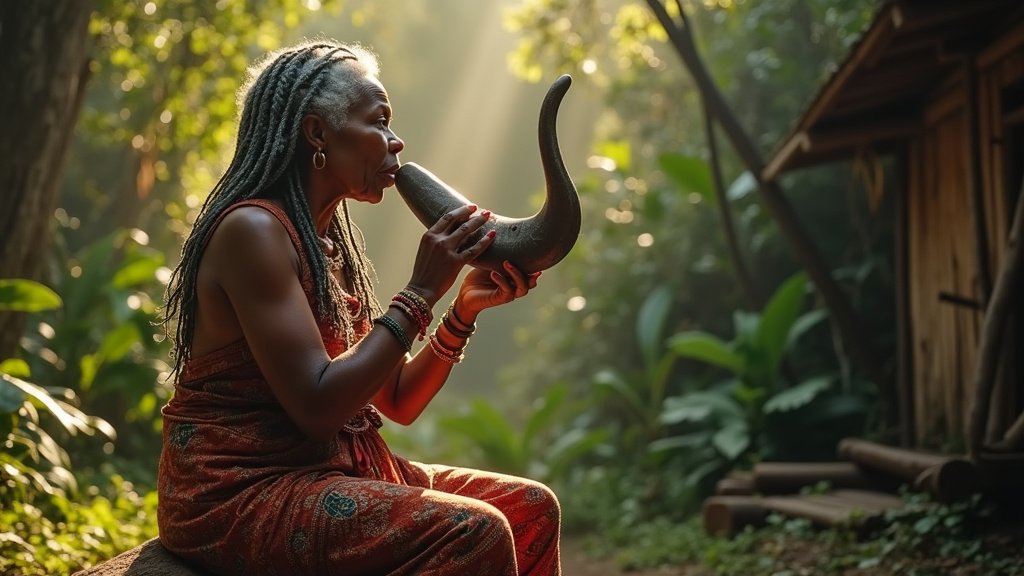Centuries after forging their freedom from enslavement, the Maroons of Jamaica continue to be powerful custodians of ancestral culture and unwavering advocates for justice. These proud communities, descendants of Africans who escaped the brutal conditions of plantations, have established a legacy of resilience and self-determination that resonates deeply within Jamaica and the broader African diaspora.
A Heritage Forged in Resistance
The story of the Jamaican Maroons began in 1655 when the British captured the island from the Spanish. Many enslaved Africans, rather than submit to new masters, fled into the island’s rugged mountainous interior, forming independent settlements and resisting colonial rule. The term “Maroon” itself is believed to derive from the Spanish word “cimarrón,” meaning wild or untamed, a testament to their untamed spirit of freedom.
Faced with constant threats and attempts by colonial authorities to subdue them, the Maroons developed sophisticated guerrilla warfare tactics, intimate knowledge of the terrain, and strong community structures. Their resistance culminated in treaties with the British in 1739 and 1740, which granted them land and a degree of autonomy, recognizing them as the first free Black people in the Western Hemisphere.
Preserving Culture, Sustaining Identity
Today, five principal Maroon communities – Accompong, Charles Town, Moore Town, Scott’s Hall, and Flagstaff – continue to thrive, acting as living testaments to their ancestors’ enduring spirit. These communities maintain distinct cultural practices, including unique forms of governance, traditional medicine, spiritual rituals, and music, many with West African origins. The council of elders, led by an elected Colonel, governs these autonomous settlements, managing internal affairs and upholding customary laws. This internal governance has led to lower crime rates within Maroon communities compared to other parts of Jamaica, reflecting effective dispute resolution systems rooted in community values.
Spiritual practices, often blending West and Central African traditions, remain a vital part of Maroon life. Ceremonies involve drumming, chanting, and ancestor reverence, often invoking spirits for guidance and protection. The Abeng, a traditional horn, serves as a spiritual and practical tool for communication. As Maroon spiritual leader Gloria Simms emphasizes, quoting Marcus Garvey, “a people without the knowledge of their past history, origin and culture, is like a tree without roots,” highlighting the critical role of culture in maintaining their identity and resilience.
Spearheading the Fight for Justice
The Maroons’ fight for justice extends beyond cultural preservation. They actively advocate for their rights, often citing the original treaties with the British. These treaties granted them specific land rights and autonomy, which they believe the Jamaican state has not always fully honored. Maroons typically do not pay land tax, asserting their rights based on these historical agreements. Figures like “Mama G” (Gloria Simms) are at the forefront of this advocacy, highlighting that true emancipation requires a restoration of what was taken from African people, including future and economic justice.
Despite facing challenges such as attempts to erode their autonomy and integrate their lands, the Maroons have consistently asserted their distinct identity and rights. Their struggle for self-determination and justice continues to inspire movements for liberation and equity across the globe. The Jamaican government has recognized the Maroons’ unique status, aligning with the UN Declaration on the Rights of Indigenous Peoples, which affirms their right to self-governance in local matters.
The Maroons of Jamaica represent a profound narrative of resistance, cultural fortitude, and ongoing advocacy for justice. Their historical struggle and continued commitment to their heritage serve as a powerful reminder of the enduring human quest for freedom and self-determination, solidifying their place as vital guardians of Jamaica’s rich cultural tapestry.

